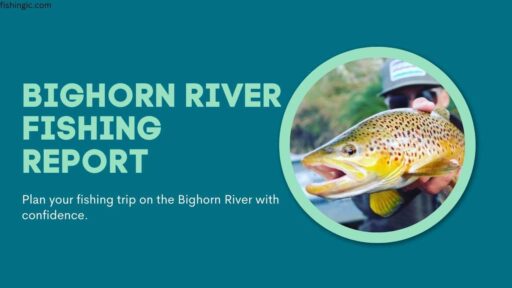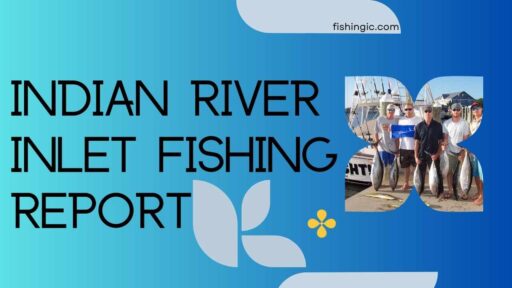Stay up-to-date with the latest Madison River Fishing Report conditions and tips on landing the big catch. Your ultimate guide for successful fishing adventures.
Fishing, to me, is more than a pastime; it’s a lifestyle and a never-ending adventure in patience, skill, and knowledge. Nowhere has it touched my soul as deeply as on the pristine currents of Madison River. In this guide, I will take you through the details of fishing in this great water. I will use my background to increase your chances of getting the best catch.
Early spring conditions: Fishing opportunities exist on the Upper Madison with mild weather. Focus on deeper, slow-moving sections as fish seek winter holding water. Nymphing with small flies like girdle bugs, eggs, and midge larvae is recommended. Streamer fishing might see success.
- Limited access: While the river gorge is open, fishing accesses near Ennis remain closed. Head towards Reynolds Pass for better accessibility.
- Recent catches: Reports mention fish responding well to small midge and baetids nymphs.
- Remember: Always check for updated information and regulations before heading out.

Credit: pexels.com
Introduction: Madison River Fishing Report
The Madison River is an angler’s dream river for those who are not familiar with it. It cuts its way through harsh Montana terrains, thus providing various types of habitats for numerous species of trout. This was my first time at this river. Clear air was filled with the sight of eagles and the sound of water rushing over rocks. It quickly became my favorite fishing spot.
This river has deep roots in natural beauty and fishery history. Even though this is just another stream, it forms part of a living ecosystem that pumps life into surrounding wilderness areas. Here, Rainbow Trout and Brown Trout dominate, and every cast offers a chance to get an exceptional story worth fishing. The river starts at the confluence between Firehole and Gibbon Rivers within Yellowstone National Park.
It flows westward through a series of lakes, canyons, and ranch lands. Then, it meets the Jefferson and Gallatin Rivers to form the Missouri River. This journey offers different angling experiences, which I always treasure.
Importance: Madison River Fishing Report
Checking the Madison River fishing report has been highly important when going out for fishing trips day after day. These reports are not just mere observations, but they are full guides that can dictate how successful your day will be on the water. Its condition is like that of weather changes in Montana, such that information is the fisherman’s best weapon against disappointment.
Reports talk about water clarity, insect hatch patterns & activities by fishes, or even recommended flies (Bergman et al 39). They have compiled data from various locals and professionals who are conversant with the river’s mood. To me, this report is a starting point for every adventure; it is at this stage that I start to plan what my day will be like.
The difference between a bountiful harvest of catches or a quite contemplative day can usually be seen by understanding this information and forecasts. Even so, anglers such as us prefer the former over the latter. The report serves well beyond its purpose; it opens up the Madison River rhythm.
Understanding: Madison River Fishing Seasons
Madison River Fishing Report has distinct fishing seasons, each with its own story of opportunity and challenge. As an angler, I have learned to move along with this tide since it is part of life’s shift.
During spring season: The melting snowpack awakens the river from winter hibernation. Spring fishing can be erratic with high water levels and colder days but provides a great time to catch big trout that are hungry. While nymphing and streamer fishing appear to be most productive methods during this season of renewal.
Summer: The beginning of summer is the peak season for fishing on the Madison. Dry fly fishing is excellent at this time, with long sunny days that mean more time on the river. However, anglers should be aware of both increased fishing pressure and warming water temperatures that can stress fish.
Fall: While autumn on the Madison may not have much to offer when it comes to crowd sizes, it is a highly productive period for angling. As they get ready to spawn, brown trout become more aggressive, and milder Weather makes fishing more comfortable in some stunning landscapes as well. Streamers and nymphs are again effective as fish begin their wintertime migration.
Winter: Even though most fishermen hibernate during winter, there’s still a quietness about the Madison that caters to dedicated anglers. Trout can be fished even during this time but are lazily feeding while midges hatch sporadically throughout winter months, offering some dry fly opportunities occasionally. Always wear warm clothes. You will have to bear bad Weather during the winter season.
Key Factors to Consider When Planning a Fishing Trip on the Madison River
One must consider several important things when planning a trip down the Madison River. These factors could turn an ordinary trip into one that you will remember forever from your life spent paddling in these waters.
To decide when to visit the river for good times, consider seasonal changes and insect hatches. They also affect your experience. Knowing what bugs live in the river and what food fishes like is key. It helps plan trips for specific attractions, such as the Salmon fly hatch.
Permits and Regulations: You don’t just walk into Mad River with your rod, assuming that you are going to get it anyway! Study Montana’s fishing regulations so you know what permits and licenses you need prior to arrival there. The rules exist to conserve fisheries. They ensure the fisheries survive for many generations.
Local Knowledge: Nothing can beat local knowledge. Hiring a guide, even if it’s just for your first day on the river, can provide invaluable insights into the river’s subtleties. Local fly shops are also treasure troves of information, offering up-to-date advice on what’s working and what’s not.
Overview Of The Current Madison River Fishing Report
The present conditions of the Madison River Fishing Report as it stands now typify its ever-changing character. The winter is ending, and the fish have started responding to longer days and higher temperatures.
Water Levels And Temperatures: Runoff from spring rain is swelling the river. This makes it muddy and hard to fish. On the flip side, this rise in water level forces more food into the water, making trout more aggressively feeding. Water temperatures may be low now. This affects fish activity and determines preferred angling techniques.
Insect Activity: Spring has just begun, with hatches only starting along some rivers in Montana.
The first will be blue-winged olives (BWOs) or midges. They bring the start of dry fly opportunities by late March or early April. With time, other species will begin flying above water, and Mad River will once again become vibrant soon enough.
Fish Behavior: The trout shake off their winter lethargy and start to feed as the days begin to shorten. They will surface, more often than usual, looking for their meals upwards. It’s a period of change, and every day can be radically different from the last one, emphasizing how important it is to be in touch with the rhythm of the river.
Best Fishing Spots and Techniques on the Madison River
Over time, I’ve learned where Madison River Fishing Report is most generous and honed my techniques to suit its diverse habitats. Each spot has its character and demands a unique approach to unlock its riches.
Ennis Lake to Beartrap Canyon: This stretch has healthy stocks of Rainbow Trout and Brown Trout. Nymphing with stonefly nymphs and mayfly imitations works well. Swinging soft hackles through deep runs is also effective.
Beartrap Canyon has narrower sections with faster water. They enable pocket water fishing. It is thrilling and challenging. A stealthy approach and accurate casting are key. Also, you need to quickly read the water and find possible areas where trout might be.
Below Ennis Dam, this tailwater section flows at a consistent rate year-round. It is a dependable fishery all year. Midge patterns work well here. They are especially good in cold Weather. Small nymphs work, too, if fished slowly.
Recommended Equipment and Gear for Fishing on the Madison River Properly equipping yourself can greatly enhance your comfort and effectiveness in river fishing. Each item from rods/reels/waders/boots plays a part in the angling experience.
Rods and Reels: I usually carry one 9-foot rod with either a five or 6-weight line since this combination suits most situations on the Madison. Together with this you require a good reel having smooth drag system for playing strong trout found in that river. In terms of hardware, I prefer medium-fast action rods that offer both casting accuracy and the ability to fight big fish.
Lines and Leaders: The weight forward floating line is a common choice for most dry fly and nymph fishing situations. A sinking, full-sinking or sink-tip line might be needed in cases of fast deeper waters or when using streamers. Leaders must match conditions and size of flies, starting from 9-foot leaders.
Waders and Boots are essential. They will help you get through different terrains and weather conditions on the river. Pay attention to good ankle support with traction if wading the slippery rocks of the Madison is part of your plan.

Credit: pexels.com
Safety Tips For Fishing On The Madison River
The beautiful Madison River can be treacherous as well. Safety should always be at the forefront of any fishing adventure.
Be Weather Aware: Montana’s Weather changes rapidly, so it is important to remain prepared. Dressing in layers, rain gear, and extra clothes is advised. Hypothermia is a real risk in summer, too, when wetness meets the elements unpreparedly.
Water Safety: The currents on this section of Madison’s are not as tame as they may appear. Always wade cautiously. Put on a PFD if you can’t swim well. Use a staff for stability in fast flows.
Wildlife Considerations: Bear territory demands respect from humans towards animals. For instance, never forget to have bear spray. Make noise when fishing to avoid surprises. And, always be bear aware.
Local Sources of Getting the Most Recent Report on Madison River Fishing Dedicated local sources make it easier to find out what is happening in the Madison River Fishing Report with regard to fishing conditions.
Fly Shops and Outfitters: These are the important places for anglers where daily guides and personalized tips are offered. Many outfitters post online river conditions and fishing reports, which can be very useful when planning your visit.
Online Forums and Social Media are great ways to find real-time information about angling. They are ideal for this. Fellow anglers often share their experiences of what they liked most from a particular spot. The Montana Fish, Wildlife & Parks Website has current info. It’s about river conditions, hatch charts, and access points. It also has conservation news and regulation changes.
Frequently Ask Question
Q: Do I need a permit to fish the Madison River?
A: Yes, you will need a Montana fishing license; in addition, there may be other permits required for certain sections of that river.
Q: What time of year is best for fishing on the Madison River?
A: Though fishing is good throughout the year, summer is most productive due to many insect hatches.
Q: Can I keep any fish I catch on the Madison River?
A: There are specific areas along the Madison River where catch-and-release rules apply, as well as size limitations and bag limits. Always check current regulations before attempting to retain any fish.
Conclusion And Last Thoughts of Madison River Fishing Report
Madison River Fishing Report holds a special place in my heart when it comes to fly fishing, and I trust that this guide will inspire you to explore its beauty. Whether you’re an experienced angler or a beginner in this sport, Madison offers a first-class fishing adventure. It will surely be memorable for a long time.
Always respect both the rive while fishing responsibly and remember those moments spent on those scary waters. May your lines be tight and your spirits high as you embark on your journey to land the big catch on the Madison River.






